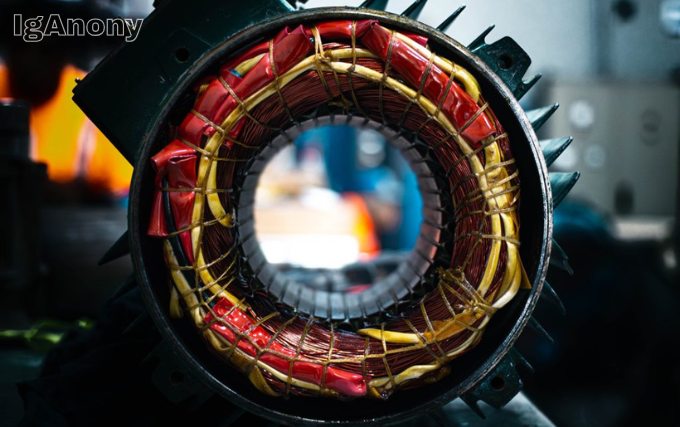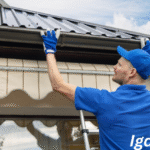Choosing the right drone motor is one of the most important decisions for any drone builder or enthusiast. The motor directly affects flight speed, maneuverability, battery life, and overall performance. Selecting a suboptimal motor can result in unstable flights, reduced efficiency, or even damage to other components.
This article provides a comprehensive, neutral, and practical overview for both beginners and experienced drone pilots. We will explore performance metrics, motor types, compatibility considerations, maintenance tips, and upgrade strategies.
Understanding Drone Motor Performance Metrics
Understanding the technical specifications of drone motors is essential before making a purchase.
KV Rating and RPM
- KV rating indicates how many revolutions per minute the motor produces per volt applied.
- High KV motors spin faster and are typically used in lightweight racing drones.
- Low KV motors provide more torque, making them ideal for heavier frames or cinematic drones.
- Practical Advice: Avoid selecting motors solely based on KV; consider propeller size, battery voltage, and intended flight style.
Thrust-to-Weight Ratio
- The thrust-to-weight ratio determines how easily a drone can lift itself and perform agile maneuvers.
- Motors with insufficient thrust can overheat and stress the ESC and battery.
- Motors with excessive thrust may increase weight unnecessarily and reduce flight time.
Efficiency and Current Draw
- Motor efficiency impacts flight duration. Efficient motors draw less current for the same thrust output.
- When comparing motors, consider “thrust per watt” as a measure of efficiency.
- High-efficiency motors may have slightly lower peak speed but significantly extend battery life.
Build Quality and Durability
- Materials such as aluminum, titanium, or high-grade steel improve motor longevity.
- Quality bearings reduce vibration and noise, enhancing flight smoothness.
- Durable motors resist wear from dust, debris, or minor crashes.
Where to buy
Discover MEPSKING: Your Premier One-Stop Shop for FPV Drone
MEPSKING is a leading online platform dedicated to FPV drone enthusiasts. As a trusted industry leader, MEPSKING bring you an extensive range of high-quality FPV drones and accessories, making it easier than ever to find everything you need for your next flight adventure.
At MEPSKING, we’ve partnered with top-tier brands like DJI, T-MOTOR, iFlight, BETAFPV, RunCam, CaddxFPV, RADIOMASTER, SpeedyBee and more to provide a wide selection of FPV essentials. From motors, ESCs, frames, and cameras to FPV goggles, controllers, and beyond, we’ve got you covered.
On top of that, our thrilling ongoing promotions bring extra fun and value to every shopping experience:
- Spin the Lucky Wheel – Win exclusive prizes and discounts.
- Try Before You Buy – Get hands-on with our products for free.
- Social Media Events – Engage with us on our official channels for a chance to win.
Why Fly with MEPSKING: Certified Quality, Smarter Prices
A Complete Product Range: We offer both variety and quality.
- All FPV Essentials in One Place: Find everything you need, from motors, ESCs, and flight controllers to goggles, antennas, and video transmitters.
- Top-Quality Selection: Partnering with leading brands, we curate the most popular and reliable products on the market. Every product undergoes professional testing by our team to ensure quality.
Dual Quality Assurance
- Brand Warranty: Enjoy coverage directly from the manufacturers.
- MEPSKING Support: Our professional after-sales service includes a two-year warranty on all orders, ensuring any quality issues are promptly addressed.
Unbeatable Prices
- Official Discounts: Take advantage of brand promotions.
- Special MEPSKING Deals – Combine platform discounts with official promotions for unbeatable savings.
Faster Delivery
We prioritize getting your products to you quickly so you can spend less time waiting and more time flying.
Don’t Miss Out on Free Trail at MEPSKING!
Every month from the 16th to 21st, MEPSKING hosts an exclusive Free Trial Program with fresh products to explore. From motors and ESCs to flight controllers and more, you’ll have the chance to test premium FPV gear for free. Don’t wait—explore this month’s lineup and take your FPV experience to the next level!
Types of Drone Motors and Their Applications
While brushless motors dominate the FPV and drone market, different designs suit different drone types and flight goals.
Micro and Cine Motors
- Typically used for drones under 250g or cinewhoop builds.
- Focused on smooth operation, low vibration, and battery efficiency.
- Ideal for indoor flights or capturing cinematic footage with minimal noise.
Racing Motors
- Found in 5-inch or larger racing drones.
- High KV for rapid acceleration and top speeds.
- Often paired with lightweight props to maximize agility.
- Racing motors prioritize responsiveness over long-term efficiency.
Freestyle Motors
- Designed to balance torque and speed for flips, rolls, and tricks.
- Durable to withstand repeated crashes without performance degradation.
- Offer moderate efficiency to allow longer freestyle sessions.
Industrial and Long-Range Motors
- Larger drones for surveying, mapping, or agricultural use require high-torque motors.
- Emphasis on reliability, stability, and longer flight times rather than speed.
- Often paired with larger props and low-KV configurations to handle payloads.
Matching Motors with ESCs and Batteries
Selecting a motor is only one part of the equation; compatibility with ESCs and batteries is critical:
- ESC must handle the motor’s maximum current draw to prevent overheating.
- Battery voltage must align with motor KV ratings to avoid inefficiency or damage.
- Improper matching can reduce flight time, cause overheating, or damage motors.
- Pro Tip: Always check the motor manufacturer’s recommended ESC and battery specs before purchase.
Practical Tips for Choosing a Drone Motor
Here are some actionable considerations:
Define Your Drone’s Purpose
Racing, freestyle, cinematic, or industrial? Each requires different thrust, KV, and efficiency balances.
Evaluate Thrust and Weight
- Perform calculations: Thrust-to-weight ratio ideally above 2:1 for freestyle and racing drones.
- Ensure your motor can handle the drone’s fully loaded weight plus any additional payload.
Consider Noise and Vibration
- Cine drones require low-vibration motors for smoother footage.
- Some high-KV racing motors may be louder due to higher RPM.
Plan for Upgrades
- Motors should accommodate potential propeller upgrades or frame modifications.
Test Before Committing
- Short test flights allow you to gauge performance, efficiency, and responsiveness.
- Monitor temperature, current, and vibration during these tests.
Maintenance and Longevity
Maintaining drone motors is crucial for reliable performance:
- Regular Cleaning: Remove dust, hair, and debris from motor windings and bearings.
- Check Bearings: Replace worn or noisy bearings to reduce vibration.
- Inspect Propeller Fit: Ensure props are properly secured to prevent shaft stress.
- Monitor Temperature: Avoid extended flights at full throttle to prevent overheating.
- Lubrication (if applicable): Some motors benefit from occasional bearing lubrication, depending on design
- Regular inspection reduces the risk of in-flight motor failure and extends overall motor lifespan.
Common Mistakes and How to Avoid Them
Even experienced pilots can make mistakes:
- Ignoring KV and propeller compatibility.
- Overlooking ESC limitations or battery voltage.
- Neglecting maintenance, bearings, or propeller wear.
- Choosing low-quality motors purely for cost savings, which may compromise reliability.
- Following basic inspection routines and adhering to manufacturer guidelines can prevent most issues.
Upgrading Your Drone Motors
Motor upgrades can enhance performance or tailor your drone to specific missions:
- Racing Drones: Consider higher KV motors for speed and responsiveness.
- Cinematic Builds: Lower KV motors with high torque for smoother, controlled flight.
- Freestyle Drones: Durable motors balancing speed, torque, and crash resilience.
- Always test upgraded motors under safe conditions to evaluate heat, vibration, and ESC compatibility.
- Reliable, high-quality options can be explored through drone motors suitable for various drone applications.
Conclusion
A drone motor is more than a spinning component—it directly affects flight efficiency, control, and durability. By considering KV ratings, thrust-to-weight ratios, efficiency, and compatibility with ESCs and batteries, you can make informed choices tailored to your drone’s purpose. Regular maintenance and careful upgrades further ensure consistent performance and longer motor life.







